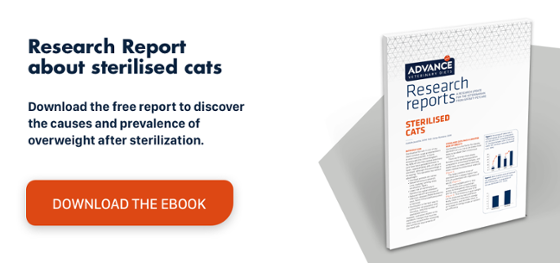Urinary incontinence in dogs. Prevalence in castrated females
Urinary incontinence in dogs: introduction
Urinary incontinence is the involuntary elimination of urine from the bladder. Possible causes in adult dogs include urethral sphincter incompetence, prostate disease, ureterovaginal fistulas, bladder and vaginal neoplasms, pelvic masses, cystitis and vesicovaginal fistulas.
Predisposing factors of urinary incontinence in dogs include obesity and sterilisation. When incontinence appears after castration, it may just be temporary as the dog learns to control its urinary muscles again during the recovery process.
Incontinence is more common in middle-aged to elderly dogs and larger breeds. The incidence among castrated females is estimated to be between 5 and 20%, compared with less than 1% in intact females. The mean age of onset is 4 years, with over 70% of cases occurring at 5 years.
Signs of urinary incontinence in dogs
The clinical signs include:
- Urine leaks and a wet coat on the lower abdomen or between the back legs
- Urinary tract infections
- Inflammation of the skin around the genitals.
Role of castration in females
To assess the prevalence of urinary incontinence in castrated females, in 2013, a retrospective study1 analysed 566 cases of ovariohysterectomised females. The subjects were categorised by age at the time of the ovariohysterectomy, number of litters prior to the intervention, body weight, treatment administered to subjects with incontinence and severity of incontinence.
A questionnaire was used to gather information on the degree of incontinence, diagnostic tests, treatment and medical history.
The authors found that the prevalence of acquired urinary incontinence was 5.12%, with no significant differences in age at the time of the ovariohysterectomy between the incontinent and control groups.
However, there was a significant correlation between body weight and incontinence, with larger females presenting higher rates of incontinence, as they were approximately seven times more likely to develop acquired urinary incontinence than smaller females.
Urinary incontinence in dogs: diagnostic and therapeutic approaches
A proposed means of diagnosing incontinence is based on the patient’s treatment response, although the diagnosis can still be confirmed in 30% of cases even without a response, while in other cases the dose should be adjuested 4 weeks after starting treatment.
Phenylpropanolamine controls urination by stimulating alpha adrenergic receptors in the urethra and increasing urethral tone, which helps in approximately 70% of cases. However, most of the literature discusses its use in both sterilised and intact females with varying degrees of effectiveness, but its use in males is barely mentioned.
